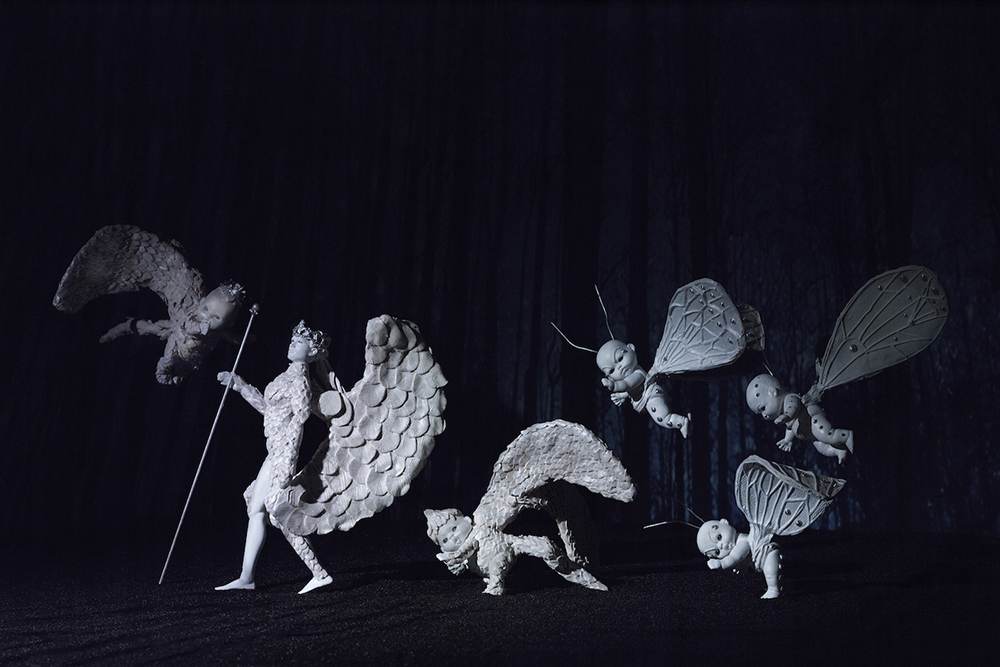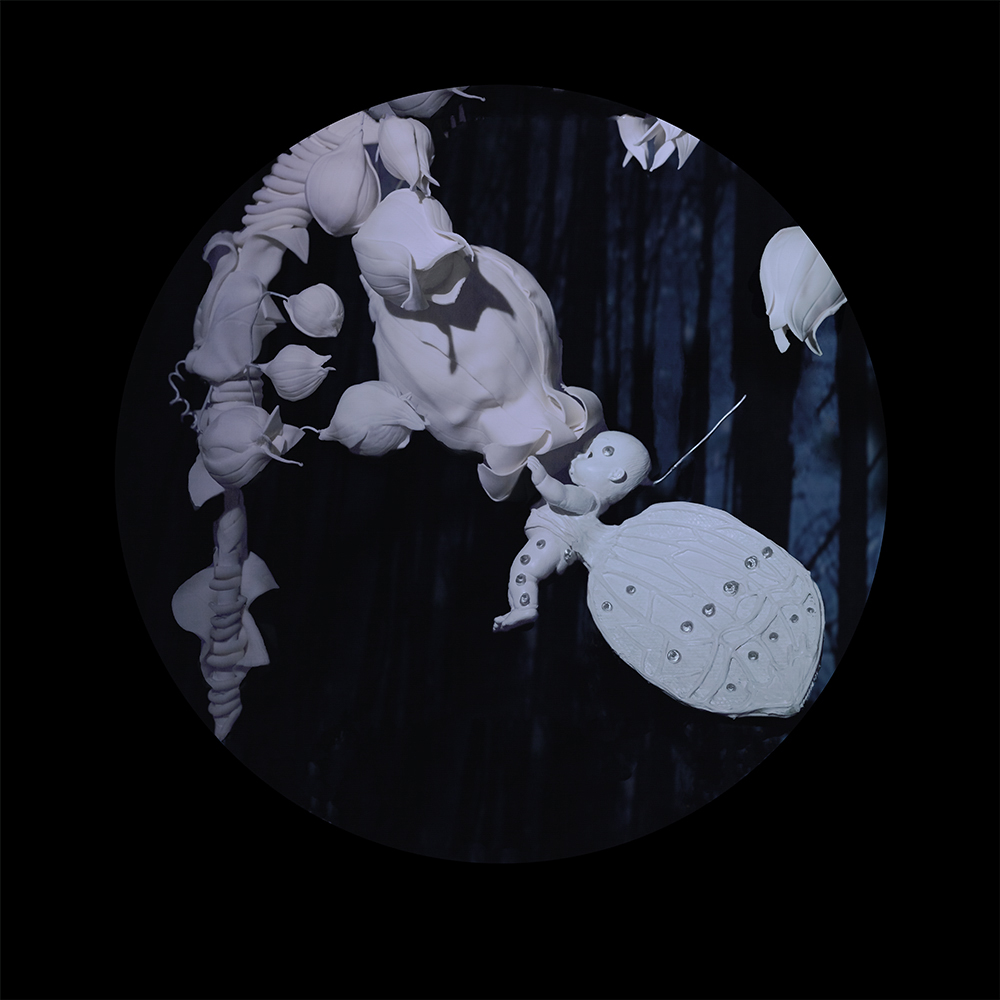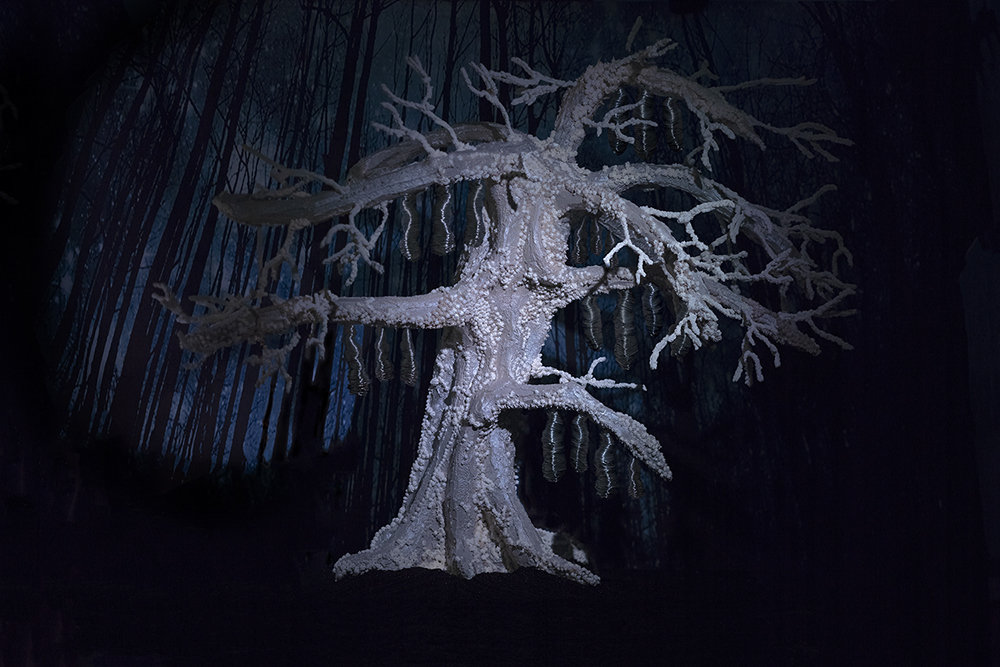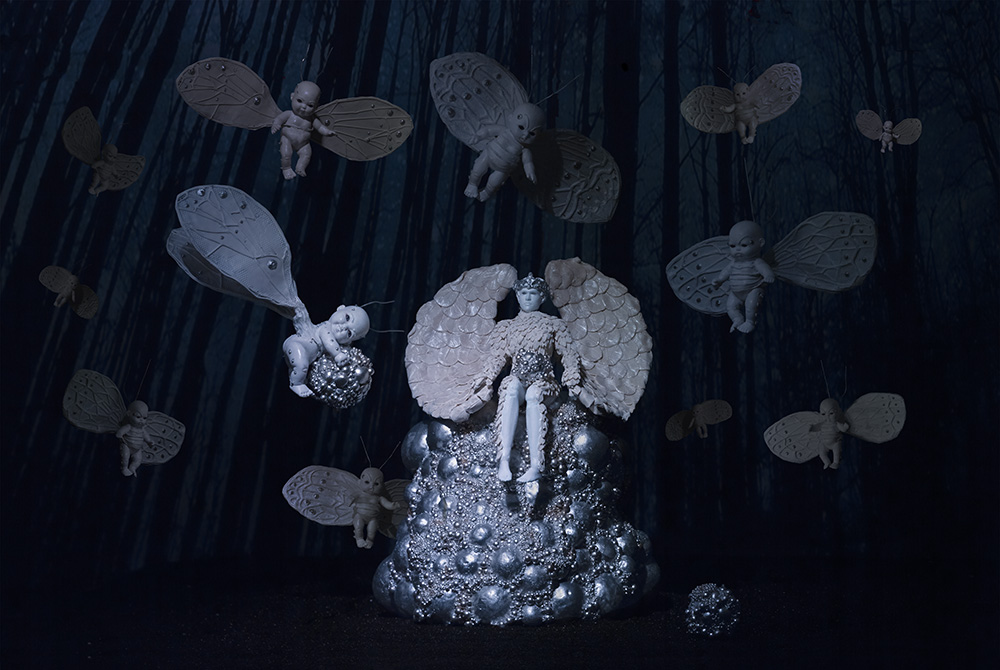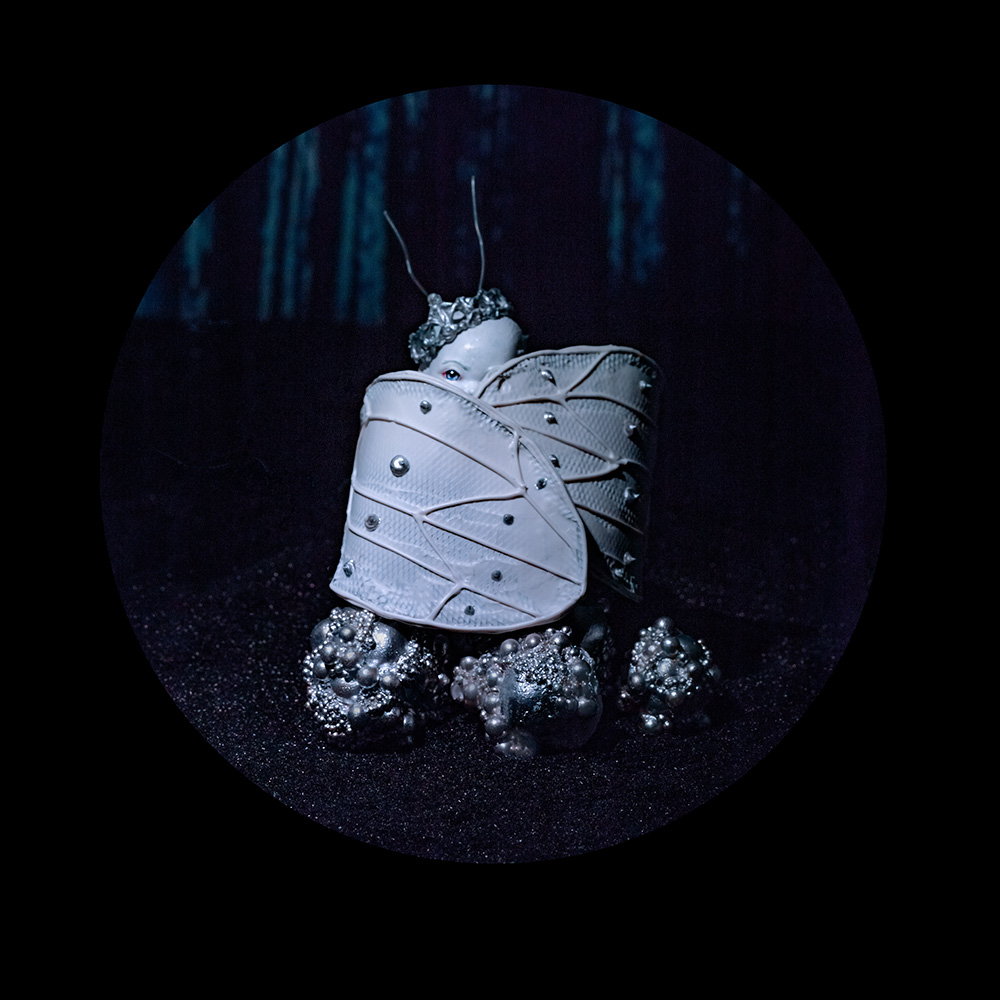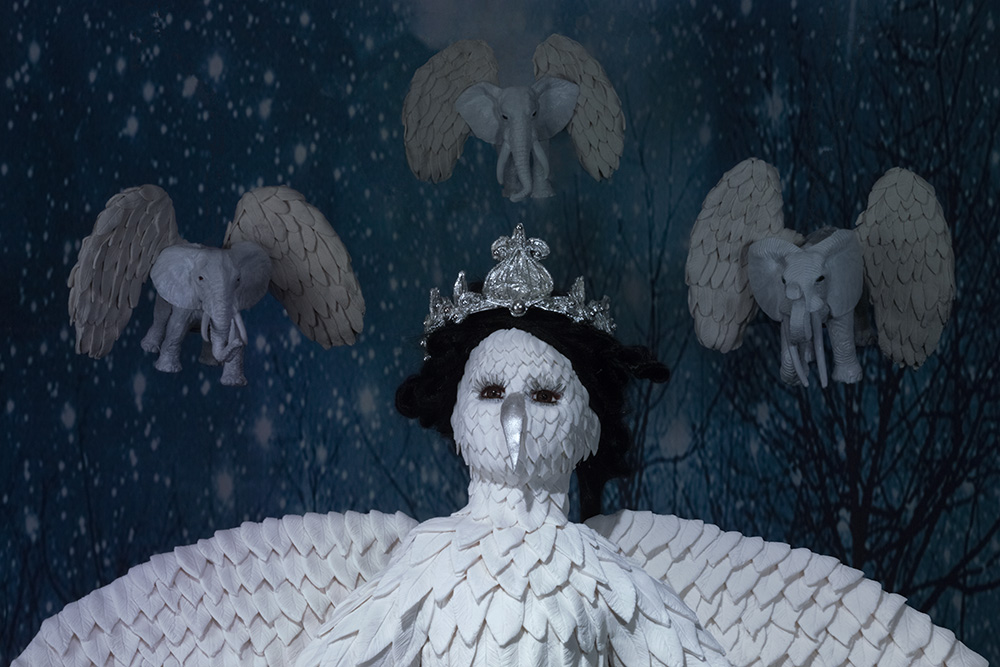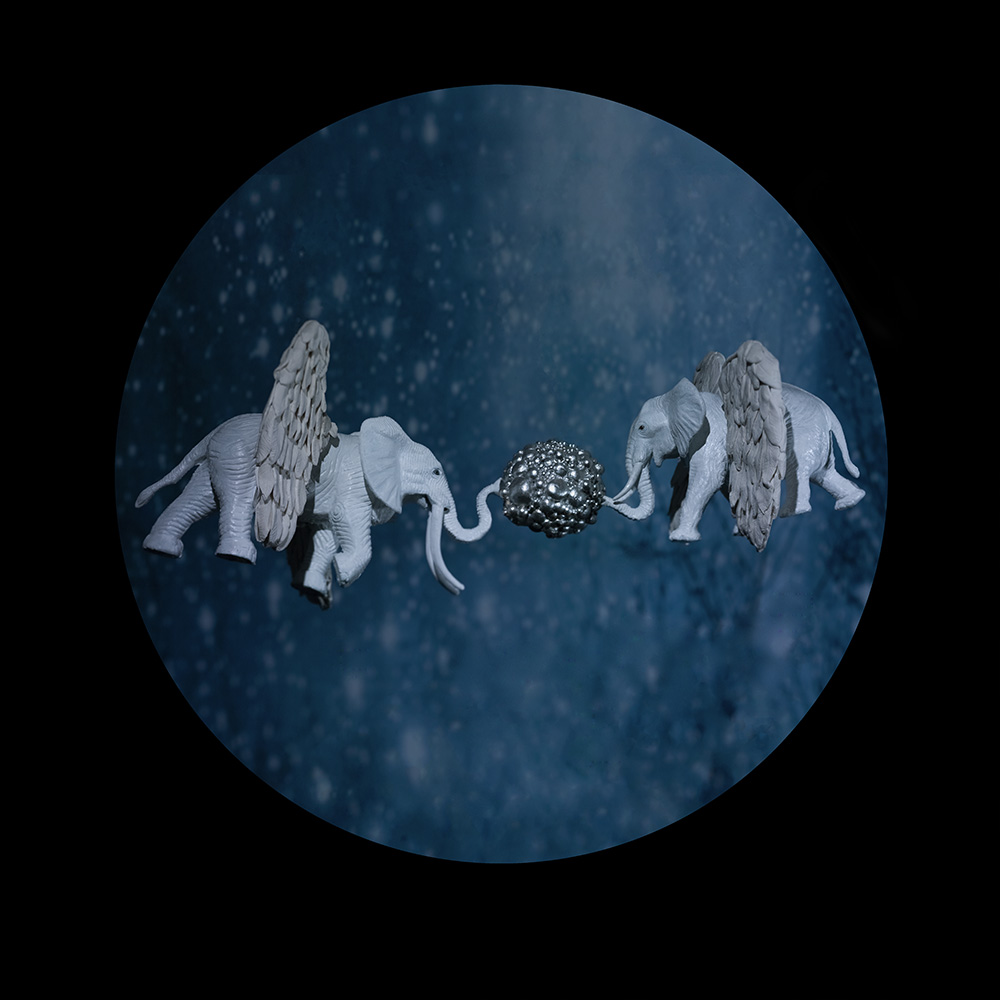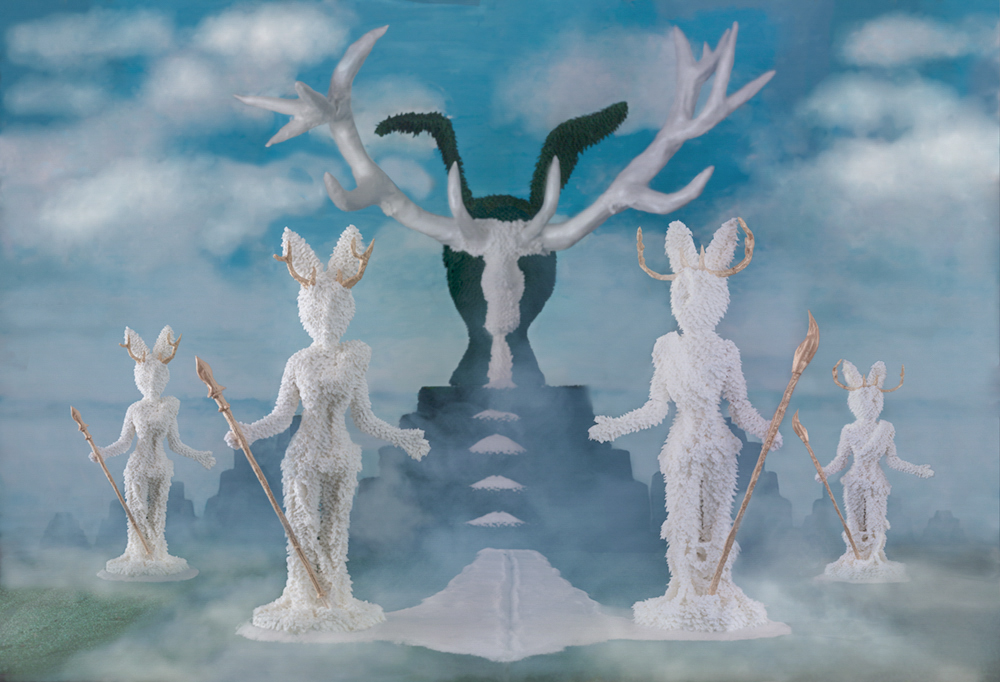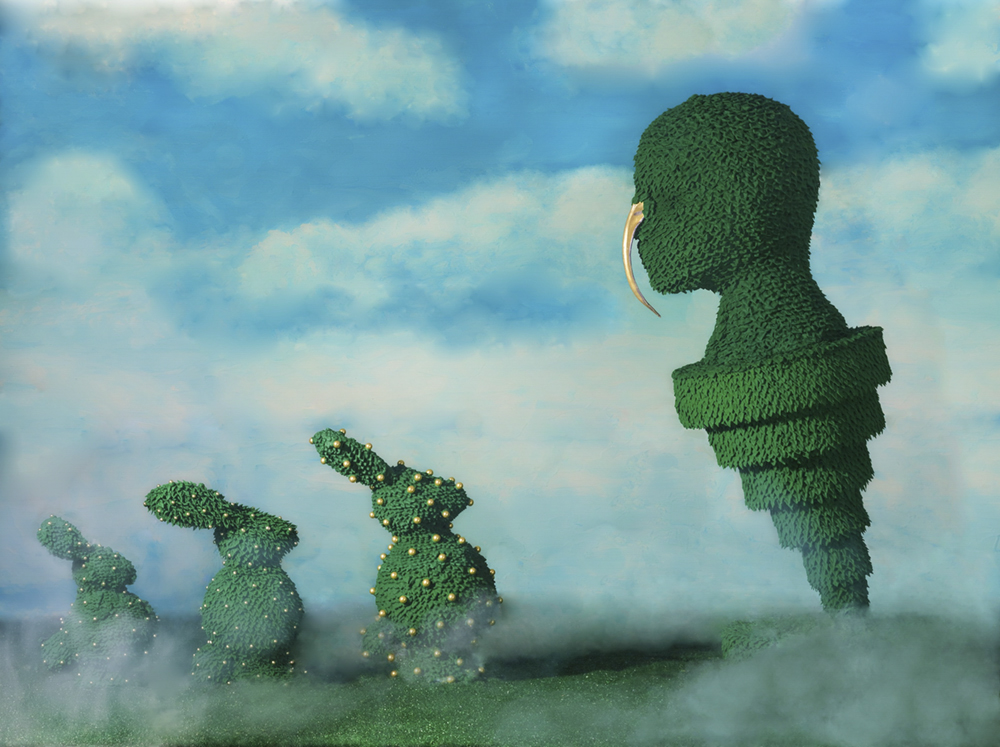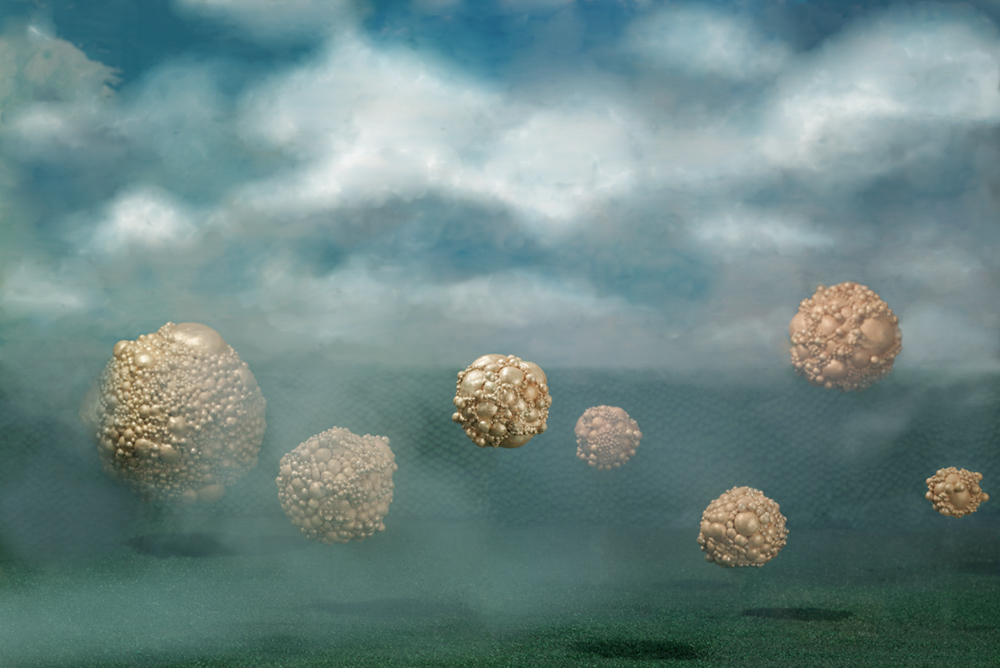Mara Trachtenberg: A Studio of One’s Own
Mara Trachtenberg is a lens-based artist who makes fantastical dream worlds out of sugar. I met Mara when I was a grad student at UConn and she was a recent graduate from the same program. Her working method fascinates me and we share a love of Rhode Island and sourdough bread.
Mara Trachtenberg is a lens-based artist who works in photography, animation and sculpture. She was born in Queens and raised in Long Island, New York. She holds BA in English and Women’s Studies, a BS in Art Education and an MFA in art with a concentration in Photography. After the birth of her daughter in 2006, she began experimenting with cake makers media to make sculpture, and began working on her current body of work, A Decadent World. Mara is the RISCA (Rhode Island State Council for the Arts) 2020 and 2016 Photography Fellow and has exhibited her work in solo and group exhibitions nationally. Her work can be found in private collections throughout the country. Mara lives with her husband, daughter and dogs in Wakefield, RI and is an adjunct professor of Photography and Digital Art and at the Community College of Rhode Island, and Photography and Gender and Women’s Studies at the University of Rhode Island.
Night
I have dreams of flying.
Always as escape from an invisible predator. I run and run, the footsteps of my pursuant pounding behind me,and I find myself rising higher and higher above the ground, the trees, and rooftops until I am free.
I am left with my heart pounding and the weightless sensation of flight.
In “A Decadent World, Night” I contemplate winged creatures as beings that have the power of flight and a history rooted in religious symbolism.
I imagine that I am an explorer, akin to a turn of the 20th century conservationist visiting an unknown,unexplored place to discover the existence of strange and beautiful winged creatures. I observe, document, hunt, and preserve them.
Capturing these winged creatures was not easy for they only appear at night. I have been fortunate to have captured some and turned their wings, symbols of religious and spiritual power into trophies for décor and testament to humanity’s power over nature. When I found myself too spent to hunt, I captured them with my camera and was quite fortunate to have captured a winged creature becoming feathered and taking flight for the first time. I, as the hunter, scientist, and explorer consume nature for my intellectual curiosity, sustenance, power, and aesthetic experiences as well as to enlighten my fellow humans.
In this work I have become the predator of my dreams.
I am a maker of an imaginary world. In my interdisciplinary practice, I sculpt fantastical creatures and dioramas that I make photographs and animations from. My fictional narratives contemplate the relationships between humans and animals, the wonder and fascination between self and other and the hierarchy embedded in these relationships.
A Decadent World Night
In A Decadent World Night, I explore the power hierarchy between animals and humans through the lens of the early conservationist movement in the early part of the 20th century. In this series, I position myself as the creator of, and the explorer/hunter into this imaginary world. As the early conservationists did, I hunt my subjects via trophy hunting and photographic hunting bringing my viewers animal bodies as trophies and photographs as scientific evidence of a place that only exists in my imagination.
A Decadent World, Topiary Garden is a series of fictional images from an imaginary world rendered in sugar, brought into a visual reality through photography, sculpture, installation and animation. Inhabited by animals and animal/human creatures, this world examines hierarchal societal structures through the relationship between animals and humans. I am perplexed by these relationships; their inherent power dynamics and the ways human cultures use, abuse, fear, love and revere animals.
I sculpt with sugar to explore the hierarchal and transformative relationship between culture and nature; thepower of culture to transform nature into symbols of decadence, frivolity, abundance and celebration. Sugar is a symbol of wealth and power; cultures owning the means of production hold economic power over cultures that produce it. Sculpting with ephemeral materials subject to deterioration, allows me to explore the relationship between the ephemeral object and the photograph, and the ephemeral object and the fixed object. Photographing the sculptures preserves them two dimensionally, offering the possibility of symbolic narrative through framing, juxtaposition, and composition. The hyper-realistic verisimilitude of the photographic image births my imaginary world into images of an imagined reality.
Rita Lombardi: I’m talking to artists who were working from home already [before the quarantine] and I believe there was a shift for you when you had your daughter, is that right? From being out and about to being a studio photographer?
Mara Trachtenberg: Well, I think I was always a studio photographer if we really want to be honest. My first year at UConn there was a little bit where I was out and about.
Rita: So you tried it out.
Mara: Yes. I’ve always been interested in how I can make things up, and what’s the difference…it’s the “medium of truth”, but I can make fiction, ha ha ha. Those kinds of questions are interesting to me. I grew up reading a lot, I’m an avid fiction reader.
Rita: Science fiction?
Mara: Any kind of fiction, though I do love science fiction.
Rita: I can see that in your work.
Mara: Yep. And I definitely lean towards more feminist types of Science Fiction. I just love the Escapism that fiction provides and I want that to be part of my work. (I have an undergraduate degree in English and Women’s Studies.)
Rita: That must have a huge influence in what you’re making. I don’t think it’s overt in your work.
Mara: No, it’s definitely not overt, but it’s definitely there. There are things that I think about that I think come out in my work in interesting ways that might not necessarily be like a straight line but are definitely underpinnings to what I’m doing. So, power, power hierarchy is something that I think about a lot it’s very very much informed by my background in feminist theory. I find power dynamics and hierarchies fascinating and so I play with that in the work. Things like how big are things and how small are things and where things are placed in the frame and where things are not and deities and gods. The newer work has more of that. The night work, the dark work. So just how hierarchies are constructed visually. I like to look at a lot of religious paintings. To sort of see what that looks like because deities are powerful creatures and how have they been depicted in art history. Those are things that I think about too. And looking at societal structure and hierarchies is very very very much attributed to my feminist thinking.
Rita: So working from home, you’re sort of god in that scenario, right? You can control your whole world. How did you start using sugar?
Mara: When my daughter was an infant and I was up late with her I watched a lot of baking shows because they’re on all night and they’re cool and you don’t have to be super focused paying attention to a story and a dialogue. I just got really fascinated by the material. Like wow, it’s like clay, you can do anything with it. I’ve taken ceramics and pottery classes and I enjoy making things but I’m not a potter so I was like if I want to make a fantasy world, an imaginary world, now I have time, how am I going to do it? I wonder if I could. Can I use this material to do that, to make a world. So I just started. I bought some books, I watched videos, I watched more cake decorating shows and I just started playing with things and it turned out that I actually could, it was possible!
Rita: Is the newer work, the night work, in sugar?
Mara: So the night time work is part sugar and part not sugar. That work started around the time that I started making animations. I realized very quickly that if I wanted the character — they just take forever to make, and they are very labor intensive and I love it, I love the labor intensivity — but if I ever want to get something finished I have to cut corners somewhere. I realized that when I use fondant to make wings, when I animate that, it cracks. It dries very quickly. So I was like, what else can I use? So I switched to plasticine and now I use epoxy clay. For some of it. Some of it is still sugar. That tree is all icing. Royal icing. The little babies with the wings, their wings are not icing because they are animated. I have another one from the series that is being screened, with elephants, the elephants are not sugar but everything else, the flowers and everything are all sugar.
Rita: What are those orbs? Those sort of metallic orbs? They’re awesome.
Mara: Yeah, I’m really into them. It’s a styrofoam center because the fondant was too heavy. So styrofoam center, fondant, royal icing, and dragées (those decorative ball things you get at the craft store) and painted with luster dust. Food safe, shiny stuff, with lemon extract.
Rita: So they smell good?
Mara: They do smell good but I had to get rid of everything because we got some mice upstairs. Yeah, they like them too.
Rita: Well, that was actually my next question. What do you do with them once you’re done shooting them? Do you store them, do they get recycled into your next projects? Do they go away?
Mara: Haha, do they go away, yeah, a lot of them do. I did these wings installations, like trophy wings, so then I realized I could cover them with epoxy and so I still have those, but the mice come, the weather comes, and I don’t have unlimited space in the studio. I made them knowing that they’re ephemeral, they go away, and I’ve come to terms with that, I’m ok with that.
Rita: It’s a pretty cool idea though, too, because so much of art making is about how archival it is and how it has to last forever and so in a way it’s kind of neat that you photograph it and the photograph is the thing.
Mara: I’ve made a couple of 2’x3’ dioramas and they’re sealed with plexi and that seems to preserve things and they’re cool but you know, there’s something about photographs that takes it to this other level of truth-telling or believability. Whereas a diorama is a very cool thing but you know it’s a diorama and it limits that “I’m actually in another world” experience that I’m very interested in.
Rita: It makes me think of Hiroshi Sugimoto’s photographs of the natural history museum and the wax museum. So the diorama is almost like third time removed when you photograph it.
I’ve been talking to people about their studio space and I think that a non-artist might think of an artist in their studio space being like one of these grand painting studios in some separate building but so many photographers that I talk to are like, “yeah, my studio, aka the basement, aka the garage…” So what’s your studio space like?
Mara: My studio space is the third floor of my house, the attic. We’ve been in this house for nine years but my studio used to be in my basement and my dining room and my neighbor’s garage. My neighbor across the street had this garage that had this finished room that they never used and so they were like come use it! It was great. It wasn’t heated so that was challenging but I wasn’t shooting there. And then we moved here and one of the reasons we moved here was we wanted more space and I wanted a better studio space. By then I knew that being a mom and piecing together a living somehow wasn’t going to afford me long stretches in a studio space and also, at the end of the day, after teaching and making sure the kid’s ok, if my studio wasn’t in my house I would never go there. I just wouldn’t.
For me, it’s a little different now that my daughter is older, she kind of wants nothing to do with me. I could be in my studio all day and she could care less, so it’s a little bit different but it’s afforded me a lot of time to do work. So when she was younger it would be like I would work when she was at school, when she was napping (when she was really young) and I would be able to transition to being a mom and she’d go to bed really early when she was really little and I would go back and work, and work at night for a couple of hours, and then as she was in elementary school and younger and still wants to hang out with me I would work until she got home from school, and then from after school time to after dinner would be mom time and then my husband would take over and I would head up to the studio for a few hours. So it’s really kind of afforded me that luxury of just being able to work whenever I have time…I’m not the kind of person who’s in the studio for eight hours at a stretch. It just doesn’t work in my life. Maybe one day it will, which would be amazing, but not right now. So I’ll work for two hours. If I didn’t have a studio at home I don’t think I would make any work, I can honestly say that.
[Baking discussion. Decided we could talk about food all day.]
Rita: What you’re saying about your studio practice, that you’re not one of those eight hours at a whack people, makes a lot of sense to me because I think it makes you so much more fresh if you’re able to do it in chunks and clear your head and then come back to it. I don’t know if that holds true for you or if it’s circumstantial and you would love to be able to do it for eight hours at a time.
Mara: Well here’s the thing, with my brain, to be honest, it’s funny, I don’t know if it’s just the past eight weeks [in quarantine] but I also notice as I get older my attention span is very different. I can sit for like 3 hours, 4 hours, and it depends on which part of the process I’m in. If I’m building things and I can sort of tune out and make little balls of whatever for like 4 hours and watch a show or listen to an audio book or something like that, I can do that. But to edit, unless I have a show coming up and I’m behind, to edit for three or four hours at a stretch I can’t do that. My brain just doesn’t work that way. But I think I could probably spend a whole day making little fondant balls. So I have friends who are like I had this great eight-hour studio day and I was painting all day and I’m like wow, I want to do that! I want that! But I don’t know if my brain is set up that way, I don’t know. And of course shooting can take a really really long time to get the shot that I want and then sometimes it takes like an hour. It’s a funny thing.
Rita: Has your practice changed at all? You were saying that in the last eight weeks your brain feels different.
Mara: I haven’t actually made a photograph, besides like, on my cell phone. I’ve been thinking about animation a lot. Probably in the last year my brain has been thinking a lot more about animation than it has about photographs, which is kind of interesting. I’ve been teaching myself, I took a couple classes at RISD. I’m supposed to be in Prague right now learning how to make puppets for stop-motion animation. So that’s not happening. So movement has become really really interesting to me which is so funny because photography is not about movement. It’s the opposite! So I’ve done some animation but my brain really goes toward stop-motion animation and that’s my photography background. I’ve done some cut paper stop-motion animation which is interesting and I’ve been trying to think of ways to mix that and actual stop-motion animation but it’s all lens-based animation. So it’s interesting. Thinking about moving things and how a narrative works through movement is a really different way to think about making images. I find myself looking at the world differently too. That’s been a shift. Prior to making animation I sort of would think about things and how they could look and how I would make something look that way. But now I think about how it looks and how it might move and how I can make that happen. So it’s interesting, it’s changing things. I can’t imagine myself not making photographs. My husband’s like maybe you want to get rid of that view camera and I’m like uh-uh. No, that’s not happening! I couldn’t do stop motion animation without my camera. So that’s been a big shift.
My work might look very different in a year, I don’t know. I’m open to it. One of my friends was like, it doesn’t look like your old work, because I had done an experimental piece that I want to go back in and play with a little bit over the winter, and I was like yeah, but there are threads I think, and do I have to make the same work my whole life? It’s not like I’m a commercial success and I need to sell my work for my gallery, who is like, “No it looks different I can’t sell it.” That’s the freedom of not being famous! [laughs]
I’ve always thought of my work as a long game. I think of some musicians, like Sting, who’s still making work, and I’m like I want to be that person. I think when you think about it over a lifetime, of course you’re going to change. Even if it’s the same kind of work, you might switch subject matter. You’re not going to make the same work your whole life. So I like being able to be like, you know what, I’m going to make some animations for a little while and then maybe I’ll turn them back into photographs. I feel open to whatever the world is going to bring me right now. But maybe like three years ago I didn’t feel that way.
Rita: Do you think that partly comes with age?
Mara: I do. I give a f*ck a little bit less than I used to. And I also have more questions than I did. I have some answers but I also have more questions. Aging is interesting. I have a few more lines on my face and a few gray hairs but I feel better about being a human.
Rita: It’s interesting that you said that this is a thinking time for you and I’ve heard that from other people too. Which is different from what I’m seeing people saying, “I have so much work I can do, I can be so productive, I can make make make because I’m home home home,” but that’s not the only thing that I’m hearing. So it’s interesting to me that you’re talking about using this time to think as opposed to just make.
Mara: It’s also like, I’m a gardener. I love to garden. I keep thinking of this time as planting seeds. I’m planting new seeds, I’m having thoughts and new images in my head that might turn into something, I’m having ideas about things that I need to express that maybe I haven’t expressed before. And I’m planting seeds in my head about what it is I’m going to do next. So that’s been very helpful because it’s very rare that I give myself time to do that, you know? The past two years I’ve just been showing all over Rhode Island, show after show after show and I don’t always want to show the same work. So I’ve been trying to make new work, make new work, and I’ve been feeling like I‘ve been on a crazy ridiculous roller coaster. I was doing a bunch of activism work and I just haven’t had a chance in a couple years to just step back. To think about what it is I want to do.
When I’m in the mode of making new things all the time I get bored after a while. Then I get to a point where I feel like I‘ve said everything I have to say. To keep making things just to make them feels not true to myself.
Rita: Right, you have to feed the well, refill the well a little bit.
Mara: I’ll be honest with you, this past year has been a big “feed the well”. I was doing too much and I stepped away, I spent all last summer writing. I did animation and that was it. I was like it’s ok for me not to do anything. Now I’m ready to go back and that feels good to me.
Rita: That goes back to the perspective of age. You know that there is time and that you need to take the time.
Mara: Yeah! I don’t know if I ever really allowed myself to do that. It was like you’ve got to keep making, keep making, if you don’t keep making you’re not worth anything. This whole inner dialogue about how productive I was being.
Rita: What are you listening to or watching now? Books, podcasts, shows….
Mara: I have all sorts of things to tell you! I love Invisibilia and the new season was really really good, their podcast. I’ve really been enjoying Taylor Mac, a performance artist, whose pronoun is judy. Great Instagram feed.
I’m watching a couple of different things. I’m watching Tales From the Loop from Amazon. I just finished Outlander because I’m a glutton for a sci fi love story. A love story with some science fiction and historical fiction elements? It touches on all the things. I’m also watching Shtisel. It takes place in Jerusalem, it’s an Orthodox family, it’s like a soap opera. Fascinating. And it’s in Hebrew so it’s sort of fun. I don’t speak Hebrew but I like to hear it. I have family members who are Hasidic Jews in Brooklyn and that’s just fascinating to me. Also watched Devs on Hulu. It’s incredibly beautiful and incredibly disturbing, visually, but emotionally incredibly beautiful too so that I’m watching very slowly because it feels very intense. I did just listen to an N.K. Jemisin book, it was so good. It was a great audiobook. The City We Became by N.K. Jemisin. It was about interplanetary and interdimensional beings who become people to fight this interdimensional planetary force that’s trying to kill NY City. Growing up in NY, you know, they got the accents right and it was very fun.
I have a bunch of books sitting on my nightstand. My attention span during this lockdown hasn’t been there. I did read The Institute about a month ago, by Stephen King. That was the right kind of writing for me right now, perfect for my brain right now. I’ve been listening to a lot of Stevie Wonder. My parents liked Stevie Wonder so there’s something very comforting about Stevie Wonder. And the Grateful Dead and I really like Hozier so I’ve been listening to him a lot.
Rita Lombardi is currently the Visiting Assistant Professor of Photography at the University of Connecticut and resides in Providence, Rhode Island. She received her MFA from The University of Connecticut and her BFA from Massachusetts College of Art and Design.
She has been the recipient of grants and scholarships, including the Innovative Teaching grant from the Wellin Museum, travel grants from the University of Connecticut and the Massachusetts College of Art and Design, the John Renna Arts Scholarship, National Endowment for the Arts. She was an artist-in-residence at the School of Visual Arts in NY and at the Wadsworth Atheneum Museum of Art in Hartford, CT.Her work has been in solo exhibits at the Munson Williams Proctor Art Museum, the Cogar Gallery, the Spirol Gallery, and the Dirt Palace as well as group shows in museums and galleries nationally; Los Angeles, New York, Boston, Louisville, and throughout New England.
She has been published in both print and online publications, including F-Stop Magazine, The Curated Fridge, Afield Magazine, Redivider Literary Journal, and Blank Canvas Magazine. Her photographs can be found in private and public collections and is represented in the Boston Drawing Project flat files.
Posts on Lenscratch may not be reproduced without the permission of the Lenscratch staff and the photographer.
Recommended
-
Salua Ares: Absense as FormNovember 29th, 2025
-
Ricardo Miguel Hernández: When the memory turns to dust and Beyond PainNovember 28th, 2025
-
Pamela Landau Connolly: Columbus DriveNovember 26th, 2025
-
KELIY ANDERSON-STALEY: Wilderness No longer at the Edge of ThingsNovember 19th, 2025
-
Jackie Mulder: Thought TrailsNovember 18th, 2025

